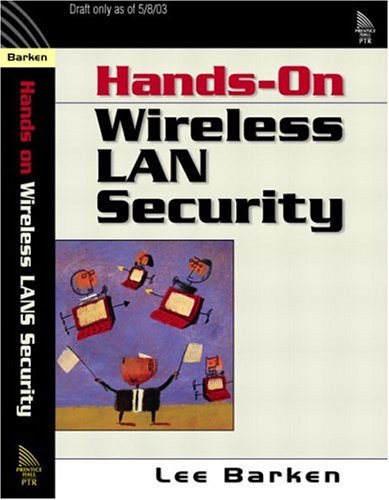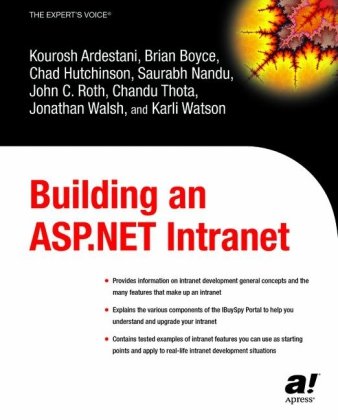Matthew Liotine9781580535168, 1-58053-516-X
Table of contents :
Team DDU……Page 1
Contents……Page 8
Foreword……Page 16
Preface……Page 18
Acknowledgments……Page 19
1.1 What Is Mission Critical?……Page 20
CHAPTER……Page 21
CHAPTER……Page 23
CHAPTER……Page 24
CHAPTER……Page 25
CHAPTER……Page 26
CHAPTER……Page 27
CHAPTER……Page 28
CHAPTER……Page 29
CHAPTER……Page 30
CHAPTER……Page 31
CHAPTER……Page 32
CHAPTER……Page 33
2.2.2 Types of Redundancy……Page 35
2.3 Principles of Tolerance……Page 39
2.3.1 Fault Tolerance……Page 40
2.4 Principles of Design……Page 41
2.4.2 Balance……Page 42
2.4.3 Network Scale……Page 44
2.4.4 Complexity……Page 46
2.5 Summary and Conclusions……Page 47
References……Page 48
CHAPTER……Page 22
Continuity Metrics……Page 50
3.1.1 Recovery Time Objective……Page 51
3.1.2 Recovery Point Objective……Page 54
3.2 Reliability Metrics……Page 55
3.2.2 Failure Rate……Page 56
3.2.4 Mean Time Between Failure……Page 57
3.2.5 Reliability……Page 59
3.3 Availability Metrics……Page 61
3.5 Risk/Loss Metrics……Page 66
3.6 Cost Metrics……Page 67
3.7.1 Utilization……Page 71
3.7.2 Bandwidth……Page 72
3.7.3 Overhead……Page 73
3.8.1 Latency……Page 74
3.8.4 Error……Page 76
3.8.5 Throughput……Page 77
3.9 Summary and Conclusions……Page 78
References……Page 79
4.1 Network Topology……Page 82
4.1.1 Fundamental Topologies……Page 83
4.1.2 Mesh Topologies……Page 84
4.1.3 Ring Topologies……Page 86
4.1.4 Tiered Topologies……Page 87
4.1.6 Peer-to-Peer Topologies……Page 88
4.2 Network Protocol Considerations……Page 89
4.3 Summary and Conclusions……Page 90
References……Page 91
5.1 Local Area Networks……Page 92
5.1.1 Ethernet……Page 93
5.1.2 Switching Versus Segmenting……Page 95
5.1.3 Backbone Switching……Page 96
5.1.6 Virtual LANs……Page 97
5.1.7 Transceivers……Page 98
5.1.9 Network Adapter Techniques……Page 99
5.1.10 Dynamic Hierarchical Configuration Protocol……Page 101
5.2.1 WAN Technologies……Page 102
5.2.2 Routing Methods……Page 109
5.2.3 Multilayer WAN Switching……Page 115
5.2.4 Design Strategies……Page 120
5.2.5 VPNs……Page 121
5.3 Metropolitan Area Networks……Page 122
5.3.1 Metro Ethernet……Page 123
5.3.2 RPR……Page 125
5.4 Summary and Conclusions……Page 127
References……Page 128
6.1 Clusters……Page 132
6.1.1 Cluster Types……Page 133
6.1.2 Cluster Resources……Page 136
6.1.4 Cluster Design Criteria……Page 137
6.1.5 Cluster Failover……Page 138
6.1.6 Cluster Management……Page 139
6.1.7 Cluster Data……Page 140
6.1.8 Wide Area Clusters……Page 141
6.2 Load Balancing……Page 142
6.2.1 Redirection Methods……Page 144
6.2.3 SSL Considerations……Page 147
6.2.5 Load Balancer Technologies……Page 148
6.2.6 Load Balancer Caveats……Page 150
6.3.1 Web Site Performance Management……Page 151
6.3.2 Web Site Design……Page 154
6.3.4 Web Site Recovery Management……Page 156
6.3.5 Internet Access……Page 158
6.4 Caching……Page 162
6.4.1 Types of Caching Solutions……Page 163
6.4.2 Caching Benefits and Drawbacks……Page 164
6.4.3 Content Delivery Networks……Page 165
6.5 Summary and Conclusions……Page 168
References……Page 169
7.1 Voice Network Access……Page 172
7.1.1 PBXs……Page 173
7.1.2 IP Telephony……Page 175
7.1.3 Intelligent Voice Response and Voice Mail Systems……Page 177
7.1.4 Carrier Services……Page 178
7.2 Data Network Access……Page 181
7.2.1 Logical Link Access Techniques……Page 182
7.2.2 Physical Access Techniques……Page 184
7.3.1 Cellular/PCS……Page 186
7.3.3 Microwave……Page 188
7.3.4 Free Space Optics……Page 190
7.3.6 Satellite……Page 191
7.4 Summary and Conclusions……Page 192
References……Page 194
8.1 Critical Platform Characteristics……Page 196
8.2 Platform Tolerance……Page 200
8.2.1 Fault Tolerance……Page 201
8.2.3 High Availability……Page 203
8.3 Server Platforms……Page 204
8.3.1 Hardware Architectures……Page 205
8.3.2 Software Architecture……Page 210
8.4.1 Hardware Architectures……Page 217
8.4.2 Operating Systems……Page 220
8.5.1 Element Management System……Page 221
8.5.2 Platform Maintenance……Page 222
8.6 Power Management……Page 224
8.7 Summary and Conclusions……Page 225
References……Page 226
9.1 Classifying Applications……Page 228
9.2 Application Development……Page 229
9.4 Application Deployment……Page 233
9.5 Application Performance Management……Page 235
9.5.1 Application Availability and Response……Page 236
9.5.2 APM Software……Page 237
9.5.3 Data Collection and Reporting……Page 239
9.6 Application Recovery……Page 240
9.7 Application/Platform Interaction……Page 241
9.7.1 Operating System Interaction……Page 242
9.8 Application Performance Checklist……Page 243
References……Page 247
10.1 Mission-Critical Storage Requirements……Page 250
10.2 Data Replication……Page 253
10.2.1 Software and Hardware Replication……Page 254
10.3.2 File Replication……Page 256
10.3.3 Mirroring……Page 257
10.4 Backup Strategies……Page 261
10.4.1 Full Backup……Page 263
10.4.2 Incremental Backup……Page 264
10.5.1 Disk Systems……Page 266
10.5.2 RAID……Page 267
10.5.3 Tape Systems……Page 270
10.6.1 Storage Vault Services……Page 273
10.6.2 Storage Services……Page 274
10.7 Networked Storage……Page 275
10.7.1 Storage Area Networks……Page 276
10.7.2 Network Attached Storage……Page 287
10.7.3 Enterprise SANs……Page 289
10.7.4 IP Storage……Page 290
10.8 Storage Operations and Management……Page 292
10.8.1 Hierarchical Storage Management……Page 293
10.8.2 SAN Management……Page 294
10.8.3 Data Restoration/Recovery……Page 298
10.9 Summary and Conclusions……Page 302
References……Page 304
11.1 Enterprise Layout……Page 308
11.1.2 Facility Location……Page 309
11.2 Cable Plant……Page 310
11.2.1 Cabling Practices……Page 311
11.2.2 Copper Cable Plant……Page 315
11.2.3 Fiber-Optic Cable Plant……Page 318
11.3 Power Plant……Page 320
11.3.1 Power Irregularities……Page 321
11.3.2 Power Supply……Page 322
11.3.3 Power Quality……Page 323
11.3.4 Backup Power……Page 327
11.3.5 Power Distribution Architecture……Page 331
11.3.6 Power Management……Page 333
11.4.1 Air/Cooling……Page 334
11.4.2 Fire Protection Planning……Page 337
11.5 Summary and Conclusions……Page 338
References……Page 339
12.1 Migrating Network Management to the Enterprise……Page 342
12.2 Topology Discovery……Page 344
12.3 Network Monitoring……Page 345
12.4 Problem Resolution……Page 347
12.5 Restoration Management……Page 350
12.6 Carrier/Supplier Management……Page 352
12.7.1 Classifying Traffic……Page 353
12.7.2 Traffic Control……Page 354
12.7.3 Congestion Management……Page 355
12.7.4 Capacity Planning and Optimization……Page 357
12.8 Service-Level Management……Page 360
12.9.1 Stages of QoS……Page 361
12.9.2 QoS Deployment……Page 364
12.9.3 QoS Strategies……Page 365
12.10 Policy-Based Network Management……Page 367
12.11 Service-Level Agreements……Page 370
12.11.1 Carrier/Service Provider Agreements……Page 371
12.12 Change Management……Page 372
12.13 Summary and Conclusions……Page 373
References……Page 375
13.1 Types of Sites……Page 378
13.1.1 Hot Sites……Page 379
13.1.2 Cold Sites……Page 381
13.2 Site Services……Page 382
13.2.1 Hosting Services……Page 383
13.2.2 Collocation Services……Page 384
13.2.3 Recovery Services……Page 386
13.3 Implementing and Managing Recovery Sites……Page 387
13.3.1 Networking Recovery Sites……Page 388
13.3.2 Recovery Operations……Page 389
13.4 Summary and Conclusions……Page 390
References……Page 391
Continuity Testing……Page 392
14.1 Requirements and Testing……Page 393
14.2 Test Planning……Page 394
14.3 Test Environment……Page 396
14.4 Test Phases……Page 397
14.4.2 Integration Testing……Page 399
14.4.3 System Testing……Page 400
14.4.4 Acceptance Testing……Page 406
14.4.5 Troubleshooting Testing……Page 407
14.5 Summary and Conclusions……Page 409
References……Page 410
CHAPTER……Page 34
Summary and Conclusions……Page 412
About the Author……Page 416
Index……Page 418







Reviews
There are no reviews yet.